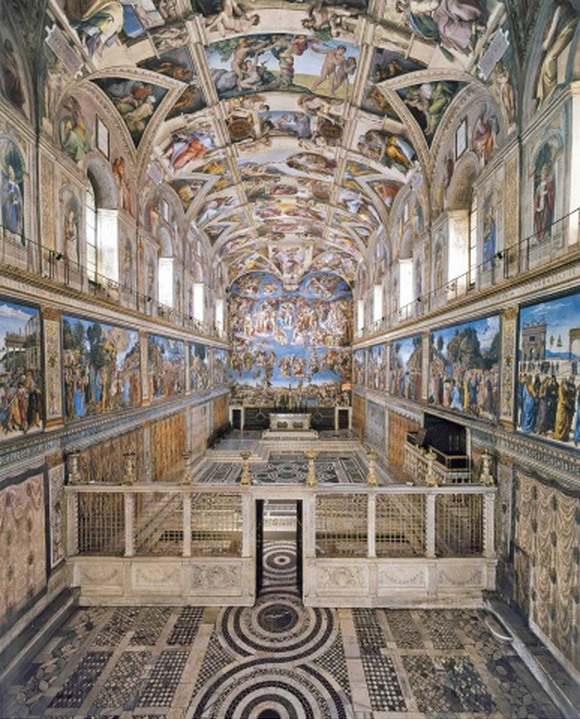The Sistine Chapel in Rome is now illuminated by a novel lighting solution from Osram. After 500 years, this extraordinary piece of art history can now be experienced in unprecedented quality, bathed in the light of more than 7,000 LEDs. The installation that has been put in place over the last few months is designed to protect the artworks while enabling much stronger lighting. At the same time, it will use up to 90 percent less electricity than the previous installation. The European Union supported the project.
Dr. Klaus Patzak, Osram’s Chief Financial Officer and also responsible for the Luminaires & Solutions segment: “Osram has developed an LED lighting solution that sets standards in terms of technological strength, quality and innovation. It’s the first such solution in the world and paves the way for completely new possibilities for our clients. We will now rapidly turn this potential into reality.”
 |
|
The newly-lit sistine chapel. (Source: Governatorato dello Stato della Città del Vaticano – Direzione dei Musei) |
Prof. Antonio Paolucci, Director of the Vatican Museums: “The Sistine Chapel contains the most extraordinary works ever conceived by the human mind and is Michelangelo's masterpiece. We want to honor the 450th anniversary of Michelangelo's death by providing new lighting for his work.”
Neelie Kroes, Vice President of the European Commission and responsible for the Digital Agenda for Europe: "Art exists to inspire us and illuminate our minds. Now that we have illuminated the Sistine Chapel with LED, Michelangelo’s art can fulfil this role even more than it has up until now throughout history.”
Supported by the European Union
The lighting of the Sistine Chapel is a pilot project with the working title of LED4Art, supported by the European Funding Program for Information and Communication Technology within the Framework Program for Competitiveness and Innovation (PSP-CIP). The aim of the subsidy program was to demonstrate new possibilities for LED technology with regard to energy efficiency and improved quality of light, and thus to achieve more rapid market penetration for the new technology. In addition to the project coordinator Osram, other partners involved are the Pannonian University in Hungary, the Institut de Recerca en Energia de Catalunya in Spain and the planning offices of Faber Technica in Italy.





 CN
TW
EN
CN
TW
EN






